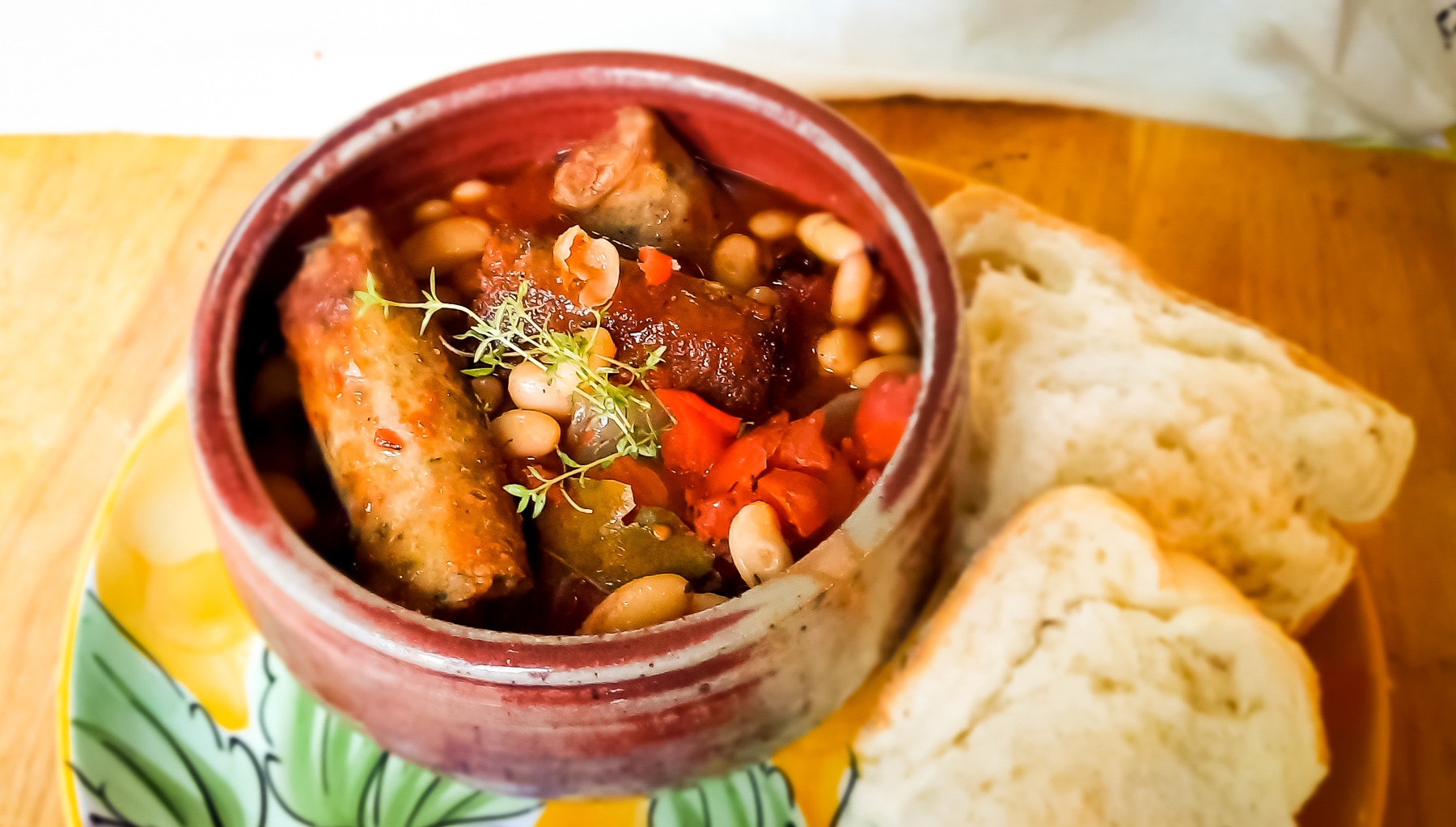A Hearty, Hobbity Feast!
Well, you can go on looking forward. There may be many unexpected feasts ahead of you.
— Gandalf, The Fellowship of the Ring
![]()
My favorite books include glorious scenes of feasting and merriment. Tolkien writes in The Fellowship of the Ring that “…their cousin Bilbo had been specializing in food for many years and his table had a high reputation.” That is something I aspire to! Pots of hearty stews, platters of roasted meats and root vegetables, served with festive ales and fruit juices. Wonderful homemade recipes are lavished with love and perhaps a slight competitiveness—who will be the cook who brings home the empty dish? (The tastiest offerings never have leftovers!) It is good to bring in what we’ve cultivated all season — to cook and linger over delicious food and good stories.
These celebration stories are not just for the adults. For anyone who has ever read Brian Jacques Redwall series to their children, readers delight in the banquets created by the squirrels, mice, and moles, with Hypericum Hadduck Hare bringing in his Thistledown Troupe of actors for the evening’s entertainments. Even ordinary food was “plain but nourishing—thick slices of chestnut and barley bread with wedges of yellow cheese, washed down with mint and pennycloud cordial.” Plain, indeed! The delight found in this hearty autumnal fare inspires visions of picnicking in a grassy clearing by a babbling brook.
Why is it that food and feasting draw us into the story and seat us happily at the table with hobbits and beasts? Because we are made for fellowship and feasting. Scripture is replete with examples of anticipation, joy found, and order restored as people communed together: the hasty meal of the Jews at the exodus from Egypt, Jesus’ parable of the wedding feast and his miracle of water into wine at the marriage in Cana, and the breaking of bread in Acts. Remember the celebration of Jesus love for us takes place at table with bread and wine.
Welcome autumn and all that we have cultivated and carefully tended during the year, then celebrate the gathering in of friends with this quick prep and slow bake recipe. According to cooking folk familiar with the history of various traditional dishes, a cassoulet is a rich, slow-baked casserole made with meat (often sausage) and white beans. It is a French dish and recognized as peasant food. Cassoulets were traditionally prepared in an earthenware pots and baked for a long time at a low heat. I served this cassoulet one day when family was stopping by for a visit on their way home. I wanted a recipe that was as easy as dumping the ingredients into a pot and sliding in the oven and this is the perfect dish.

White Bean and Italian Sausage Cassoulet
2 1/2 pounds Italian sausage, cut into chunks of 2″ or so
3 16 oz. cans chopped tomatoes with juice
1 medium onion cut into 1″ chunks
3 T olive oil
1 1/2 Tbs. balsamic vinegar
2 tsp dried thyme leaves
3 whole bay leaves
salt and pepper to taste
3 16 oz. cans cannellini beans, drained, but reserve 1/2 cup of liquid.
Adjust oven rack to lowest position and, 5 minutes before you are ready to put the food in, preheat oven to 425 degree.
Mix all ingredients except beans and liquid in heavy casserole pot (cast iron is wonderful). Place pan in oven. Roast until sausages are brown and tomatoes have reduced to a thick sauce. This will take about 40 minutes. Remove pot from oven, stir in beans and the 1/2 cup liquid, stir to combine, and bake another 15-20 minutes. Remove bay leaves and serve in the pot with loaves of Italian bread for dipping.
This cassoulet is even better the next day! If you make it the day prior, reheat before serving at 300º for 30 minutes or so, stirring once or twice to heat evenly.
![]()
We innocently met. No simple word
That shall be uttered at our mirthful board,
Shall make us sad next morning or affright
The liberty that we’ll enjoy tonight.
— Ben Jonson, “Inviting a Friend to Supper”[1]
[1] This poem snippet was quoted from English playwright and poet, Benjamin Jonson (1572-1637) in his poem “Inviting a Friend to Supper.” The entirety of his poem can be found at: https://www.poetryfoundation.org/poems/50672/inviting-a-friend-to-supper. You may be familiar with another of his poems “Song: to Celia” that begins “Drink to me only with thine eyes.” Food and drink have always been an important part of literature and life!
The featured image is courtesy of Annie Nardone and is used with her kind permission for Cultivating.
Annie Nardone is a lifelong bibliophile with a special devotion to the Inklings and medieval authors. She is a Fellow with the C.S. Lewis Institute and holds an M.A. in Cultural Apologetics from Houston Christian University. Annie is the Director of Visual Artists for The Cultivating Project and columnist for Cultivating Magazine. She is founding board member, managing editor, and author for the apologetics quarterly, An Unexpected Journal. Her writing can also be found as travel blogger for Clarendon Press U.K., with published poems at Calla Press and Poetica.
She holds a MA in Cultural Apologetics from Houston Christian University, and is a Fellow with the C.S. Lewis Institute. Annie writes for Cultivating, Literary Life, and Clarendon House Books, and is a managing editor and writer for An Unexpected Journal. Annie collaborated on three books in 2022, published by Square Halo Books and The Rabbit Room. She recently designed a curriculum detailing the intersection of theology, the arts, and history and is a Master Teacher for HSLDA. She resides in Florida with her Middle Earth/Narnia/Hogwarts-loving family, and an assemblage of sphynx cats and feline foundlings.
Leave a Reply
A Field Guide to Cultivating ~ Essentials to Cultivating a Whole Life, Rooted in Christ, and Flourishing in Fellowship
Enjoy our gift to you as our Welcome to Cultivating! Discover the purpose of The Cultivating Project, and how you might find a "What, you too?" experience here with this fellowship of makers!


Add a comment
0 Comments